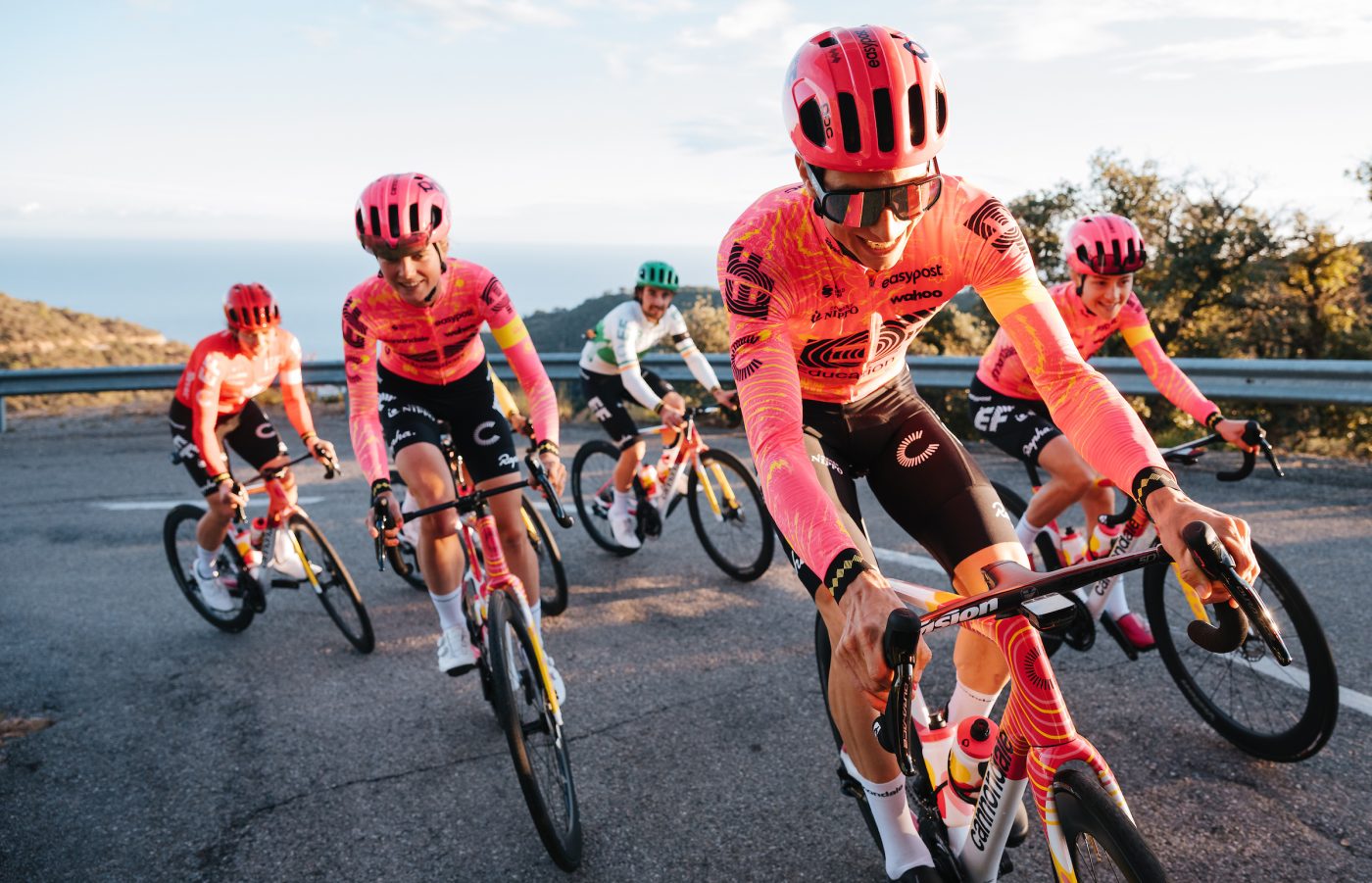

When beginning cyclists experience discomfort, it often affects their knees, pelvis, back, or neck. However, your hands can also be quite painful if you sit incorrectly or use equipment that isn’t best suited for you. During a training session, tingling hands are extremely annoying, and in a race, painful, numb, or even a complete lack of sensation in your hands can mean that you don’t have good control over your handlebars and brakes, with all the possible consequences that entails. It’s crucial, therefore, to ride without any discomfort in your hands.
Ever experienced a numb feeling, tingling, or pain in your arm, hand, wrist, or fingers after a bike ride? If you answer ‘yes’, you might be dealing with an overuse injury in your wrist. The cause of this overuse can be the compression of one of the nerves in the hand. With some adjustments to your bike and wearing protective gear, these complaints can be prevented.
The hand is a complex assembly of firmly connected bones, tendons, muscles, and nerves, which together enable small intricate movements. An injury to just one part of it can significantly impact the function of the entire hand. About a third of all cycling injuries are hand problems. Most of these injuries result from a fall, leading to abrasions, bruises, or fractures. In some cases, however, there is a (chronic) hand problem without a fall. In such cases, one speaks of overuse injuries. For the hand, these are generally compressions of nerves. While cycling, the hands rest on the handlebars and, along with the feet on the pedals and the seat on the saddle, are the support points on the bike. Therefore, a fair amount of pressure can be exerted here. The two most common hand injuries among cyclists are ulnar neuropathy, also known as handlebar palsy, and carpal tunnel syndrome.
Handlebar Palsy
A ‘true’ cycling injury is the so-called ulnar neuropathy, known among cyclists as ‘handlebar palsy’. The nerve compression causing this is a common problem in both competitive and recreational cyclists. It is caused by compression on a nerve in the hand and wrist, on the side of the little finger: the ulnar nerve (see figure 1). This nerve is responsible for the sensation in your ring finger and little finger. It also controls most of the movements in your hand.
The compression results from direct pressure on the nerve when leaning on the handlebars. Stretching the nerve also leads to these complaints, which can be caused by riding low in the drops. The pressure or stretch on the nerve results in numbness and tingling of the ring finger and little finger and/or loss of strength in the hand. After cycling, it can take days or even months for the complaints to disappear. Rest, stretching, and anti-inflammatory drugs like ibuprofen or naproxen help reduce the symptoms. Sometimes surgery is necessary, but usually not. By placing less pressure or weight on the handlebars while cycling and avoiding overextension, you can prevent the injury from (re)occurring.
Carpal Tunnel Syndrome
Carpal tunnel syndrome is another overuse injury that cyclists often suffer from, though it’s less common than ulnar neuropathy. Symptoms arise from gripping the top of the handlebar, which puts pressure on the nerve on the inside of your hand, the median nerve. Pressure on this nerve causes symptoms like numbness and tingling in the thumb, index, middle, and ring fingers. Unlike ulnar neuropathy, these symptoms quickly disappear after cycling. While the pressure from the handlebars is often the cause of the symptoms in cyclists, there can be other causes for carpal tunnel syndrome. It often occurs in people who have injured their wrist in an accident. So, it could also be the case if you’ve fallen off your bike or injured your wrist in another way. If you experience persistent symptoms, it’s wise to consult a general practitioner or sports doctor for examination and advice.
How to Prevent These Complaints?
There are a few simple things you can do to prevent wrist complaints. By stretching your hands and wrists well before a ride, you ensure that your hands can better absorb the pressure. You can also make adjustments to your handlebars, such as thicker handlebar tape, which better absorbs shocks from the road, reducing pressure on your hands. This can also be achieved by wearing padded gloves. Also, take sufficient breaks during long rides (which is of course a bit more difficult during a race) and regularly change your hand position.
When you’re on the tops of the bars, try as often as possible to place the weight more on the outside of your palms. When you’re in the drops, make sure you don’t put all the pressure on the outside. In general, the idea is to sit on your bike like a speed skater: leaning forward, but not really resting on your arms. Your hands on the
handlebars are used to determine the direction of the bike, but in principle, you shouldn’t put any weight on them.
However, wrist complaints are not always solvable by adjusting the bike position or equipment. The pressure on the wrist will be greater in a deeper position, but that doesn’t necessarily mean that adjusting the bike position will make a difference. In most cases, wrist complaints will arise due to overuse of the wrists. This means, on the one hand, that the wrists are not yet strong enough, and on the other hand, that the transition to (even) more training was a bit too much. There are plenty of emergency solutions, but the foundation lies in building up training more gradually and in smaller steps so that the wrist is less overloaded.